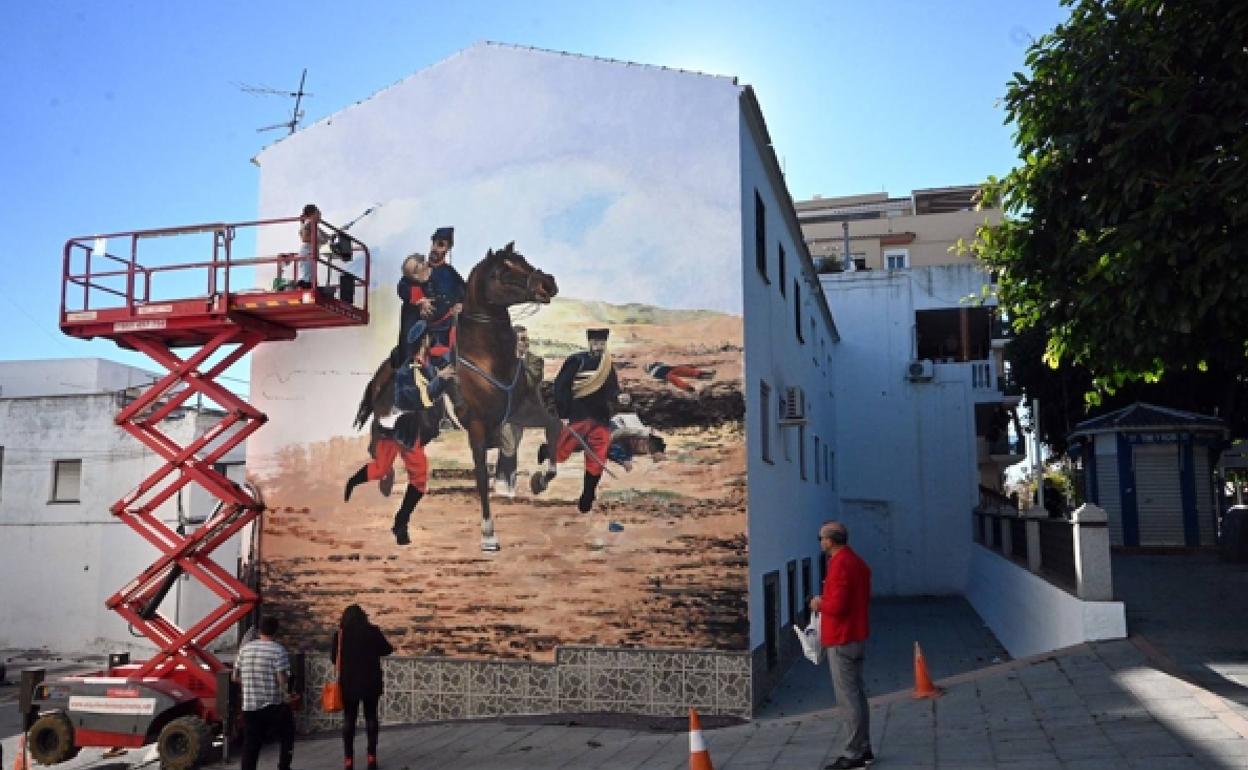A tribute to the Marquis del Duero, founder of San Pedro Alcántara
A municipal building displays artist Nesui's interpretation of a painting of the marquis' death
Joaquina Dueñas
Thursday, 9 December 2021
Manuel Gutiérrez de la Concha, first Marquis del Duero, died in the battle of Monte Muru on 27 June, 1874. This event was captured by painter Joaquín Agrassot in his painting The Death of the Marquis del Duero, completed in 1884. Now, a municipal building in San Pedro Alcántara displays an interpretation of this piece of the town's history by graffiti artist Guillermo Paz, also known as Nesui.
San Pedro's head of the Culture, José Antonio Moreno, said that the aim of the mural is to become an icon of the town centre and to serve as a tourist attraction, as well as remembering the founder of the once agricultural settlement.
San Pedro cannot be understood without its origin linked to the land and its cultivation, to the sugar cane harvests and the sugar mills. The marquis, mainly a soldier and a politician, organised the agriculture of the area.
In 1857, he began purchasing plots of land between the meadows of the Guadaiza, Guadalmansa and Guadalmina rivers, which he then set aside for sugar plantations.
San Pedro was then built around these plantations, with homes for the labourers and foremen, a company warehouse, buildings to process the sugar canes and a church. Then the colony was blessed with the name San Pedro Alcántara, in honour of the marquis' only daughter, Pedra de Alcántara.
The town left its mark on 19th-century urban planning, with an urban grid that followed a clear hierarchy. When the marquis planned the town centre, he built a house for the administrator on the north side of the church square as well as a home for himself and his family: the Villa de San Luis. Now it serves as the district town hall.
In 1861, there were over 500 settlers living in Calle Lagasca, Pizarro and Duero. Multiple families all lived in simple, gable-roof houses. After the marquis' death and despite his debts, the settlement continued to flourish and by 1900 San Pedro had 2,000 inhabitants.
The Marquis del Duero was also interested in training his workers and the innovative development of the land. He kept a close eye on what other countries were doing and made his colony one of the best in Spain, both in its size and in innovations, which in turn helped transform the traditional Andalusian agriculture.
In order to achieve this, the marquis searched for specialised farmers, attracting workers from Valencia and Alicante and from the sugar cane growing areas of Granada and Almeria.
He also brought steam engines such as the locomotive and the threshing machine and created the Agricultural Training School or the Model Farm in order to produce specialists and foremen to promote development.
Grandee of Spain and president of the Senado
While in San Pedro his is known as the founder of the agricultural settlement, the marquis was a prominent figure in 19th century Spanish history. His noble titles included Grandee of Spain and member of te Order of the Golden Fleece adn he presided over the Senado (Spain’s upper house of parliament) for five consecutive terms. He fought on the Isabelline side in the Carlist wars, reaching the rank of Captain General earning nine Laureate Crosses of Saint Ferdinand. In Madrid, by popular demand, an equestrian statue was erected in his memory in Plaza del Doctor Marañón.
